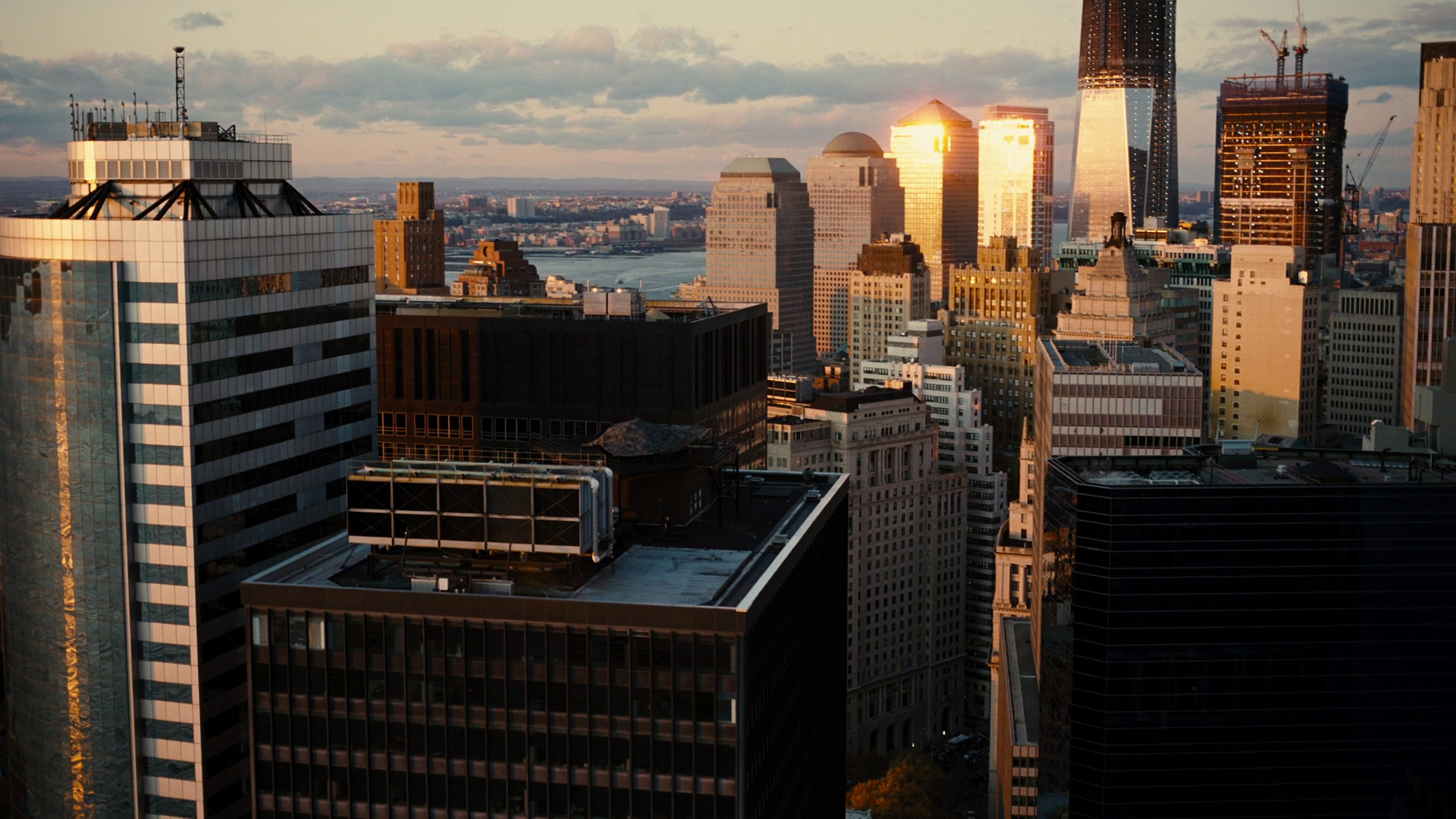

All those things are more interesting for the player than just a modern city. Even something as kind of generic as construction, it becomes interesting when it's halted construction or it's now abandoned and overgrown, or it's ruins. So there's a lot of areas that are kind of stuck in time. “So because we're making a game, really what we want to do is kind of obviously reveal some of that stuff. “If you visit a city in real life, it's hard to tell some of that history,” explains McMahon. Within those boroughs, the team tries to tell stories without simply having someone speak them out loud:

Cobblepot Steel on the other hand informs the industrial nature of its borough, with squat, flat-roofed buildings and towering chimney stacks. Wayne Tower is a modern skyscraper, set amid a landscape of high-rises, perfect for surveying crime from above and swooping in. Each borough includes a signature building, the founding families’ monuments to themselves, and each of those buildings informs the history, architectural style, and level design around it. The result is a Gotham that drastically changes depending on where you are in the city. So then we build around that to where the identity for those districts really is based off of that family.” “The families moved there, they built imposing structures within those districts. “So for us, the five boroughs, it started with the families,” says open world level design director Kristofor McMahan. Key to this take on Gotham are those five boroughs, and the worldview of the families that historically controlled them. The team didn’t just build an open world to play in – it’s truly trying to build a city. The timeline informs everything from the plot, to the gameplay, to the game’s biggest mystery, the Court of Owls conspiracy. Games Montreal created that centuries-long history early in production a whole new timeline for a whole new version of Gotham City.Īnd it isn’t merely window dressing. Which brings us to the present day, and the Gotham you’ll be exploring as Batman’s proteges in Gotham Knights – an open world as soaked in history as it is by neon light and vigilante-friendly shadow. The Waynes, meanwhile, invested their billions in New Gotham, helping advance the town into a new technological age. By the 1960s, Gotham had truly become a patchwork of industry and architecture – the Arkhams settled in North Gotham, building their famous asylum (yes, it’s in the game, and no, it’s not as you’ve previously seen it) near the leafy university. Gotham continued to transform over time – in the 1920s, the Elliots took hold of the 20th Century’s newest means of control, mass media, and built Downtown Gotham in a new art deco image. By the 1850s, Gotham had become a major trade hub, helped along by the industrialist Cobblepots and their smoke-belching Southside steel mills. In the early days, the Kanes established themselves on Gotham’s natural harbour (now known as Historic Gotham), tying the family to their new country’s military might, building ships and weapons of war. The city quickly spread beyond its original bounds, developing five boroughs – and, in each, one of those five founding families would take root.


 0 kommentar(er)
0 kommentar(er)
